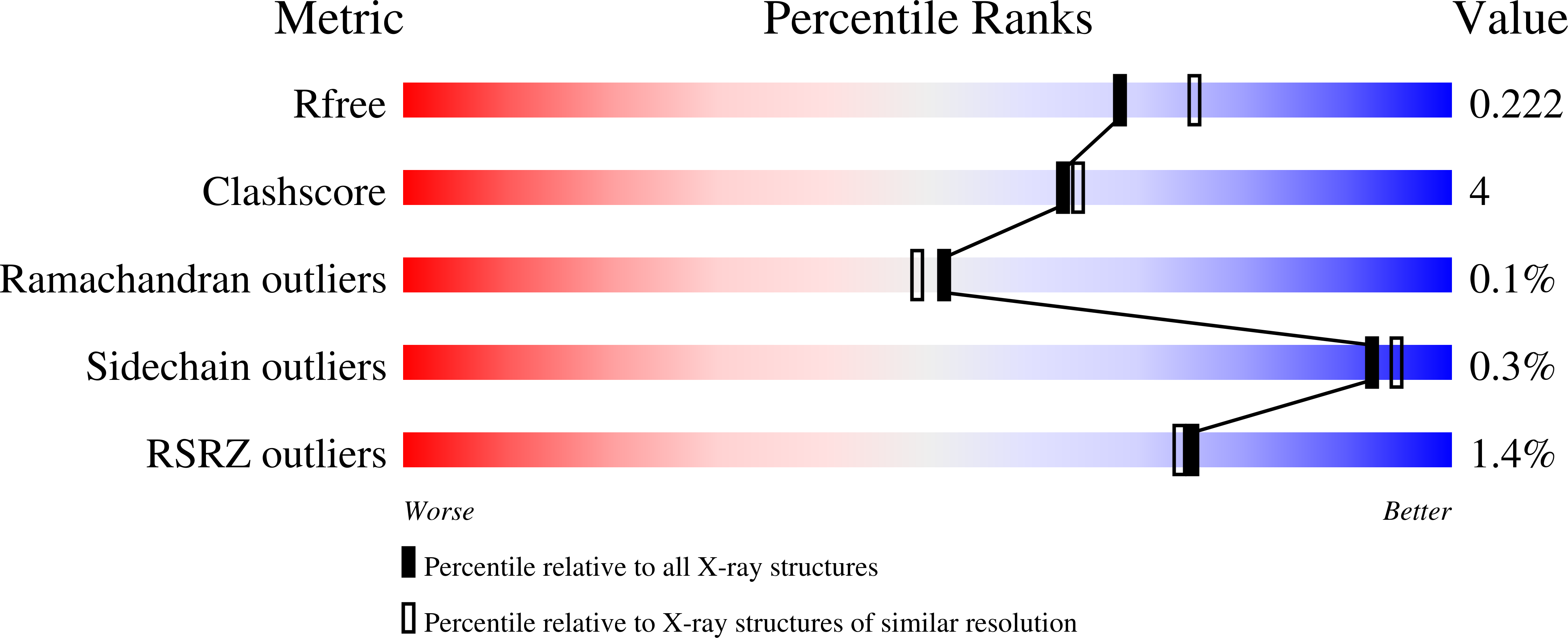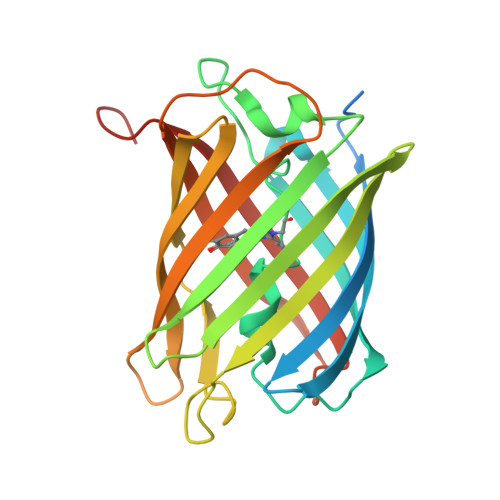Electrostatic control of photoisomerization pathways in proteins.
Romei, M.G., Lin, C.Y., Mathews, I.I., Boxer, S.G.(2020) Science 367: 76-79
- PubMed: 31896714
- DOI: https://doi.org/10.1126/science.aax1898
- Primary Citation of Related Structures:
6NQJ, 6NQK, 6NQL, 6NQN, 6NQO, 6NQP, 6NQQ, 6NQR, 6NQS, 6NQV - PubMed Abstract:
Rotation around a specific bond after photoexcitation is central to vision and emerging opportunities in optogenetics, super-resolution microscopy, and photoactive molecular devices. Competing roles for steric and electrostatic effects that govern bond-specific photoisomerization have been widely discussed, the latter originating from chromophore charge transfer upon excitation. We systematically altered the electrostatic properties of the green fluorescent protein chromophore in a photoswitchable variant, Dronpa2, using amber suppression to introduce electron-donating and electron-withdrawing groups to the phenolate ring. Through analysis of the absorption (color), fluorescence quantum yield, and energy barriers to ground- and excited-state isomerization, we evaluate the contributions of sterics and electrostatics quantitatively and demonstrate how electrostatic effects bias the pathway of chromophore photoisomerization, leading to a generalized framework to guide protein design.
Organizational Affiliation:
Department of Chemistry, Stanford University, Stanford, CA 94305, USA. sboxer@stanford.edu.















